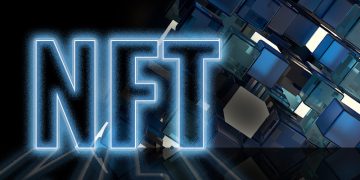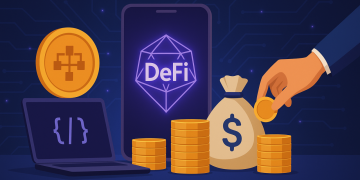Blockchain technology has been hailed as a revolutionary force capable of transforming multiple industries, from finance to healthcare to supply chain management. Yet, despite its potential, the adoption of blockchain varies significantly across different sectors. Some industries have embraced blockchain wholeheartedly, while others are more cautious or even resistant to its integration.
In this article, we will explore the factors that contribute to the disparity in blockchain adoption across industries, looking at both the driving forces and the challenges that each sector faces.
1. Industry-Specific Challenges and Readiness
a) Financial Services: Early Adopters of Blockchain
The financial sector was one of the earliest industries to recognize the transformative potential of blockchain technology, with cryptocurrencies like Bitcoin paving the way for broader adoption. Today, blockchain is widely used in areas such as payments, cross-border transactions, decentralized finance (DeFi), and smart contracts.
Why is blockchain adoption high in finance?
- Need for Transparency: Financial institutions are dealing with large amounts of sensitive data, and blockchain’s transparency ensures all transactions are verifiable and traceable.
- Efficiency: Blockchain can streamline cross-border payments and reduce transaction costs. Traditional banking systems are often slow and costly, while blockchain allows for near-instant, low-cost transfers.
- Security: Blockchain’s cryptographic security makes it an attractive solution for preventing fraud, hacking, and other financial crimes.
b) Healthcare: Cautious Adoption Due to Regulatory and Privacy Concerns
In contrast to the finance industry, the healthcare sector has been more cautious in adopting blockchain technology, despite its potential to enhance patient data security, improve medical record management, and streamline supply chains.
Why is blockchain adoption slower in healthcare?
- Regulatory Hurdles: Healthcare is highly regulated, with strict data privacy laws like HIPAA in the U.S. Blockchain’s immutable nature, while an asset in ensuring data integrity, can conflict with regulations that require the ability to erase or modify patient data.
- Integration with Existing Systems: Healthcare organizations rely on legacy systems that may be difficult or costly to integrate with blockchain-based solutions. The transition to a decentralized framework could require a complete overhaul of the current infrastructure.
- Patient Trust: While blockchain can enhance privacy, it may not immediately win the trust of patients who are hesitant to share sensitive medical information on a decentralized network, despite its cryptographic security.
c) Supply Chain and Logistics: Blockchain for Transparency and Efficiency
The supply chain and logistics industry has found substantial value in blockchain’s ability to provide traceability, transparency, and efficiency. Companies in this sector use blockchain to monitor the flow of goods from suppliers to consumers, ensuring the authenticity of products, preventing fraud, and improving logistics.
Why is blockchain well-suited for supply chain management?
- Traceability: Blockchain allows for the creation of an immutable record of the journey of goods, providing proof of origin and eliminating the possibility of counterfeit products.
- Enhanced Efficiency: Blockchain’s decentralized nature enables faster processing of transactions, such as customs clearance and inventory management, reducing delays and costs associated with paper-based systems.
- Cost Reduction: Blockchain can reduce overhead by eliminating intermediaries (e.g., brokers or third-party auditors) in the supply chain process, lowering transaction costs.
d) Government and Public Sector: Resistance Due to Bureaucracy and Complexity
Blockchain technology holds promise for improving transparency, accountability, and efficiency in government operations, such as voting systems, public records management, and welfare distribution. However, the adoption of blockchain in the public sector has been slow.
Why is blockchain adoption slower in government and public sectors?
- Bureaucratic Resistance: Governments and public institutions are typically slow to adopt new technologies due to bureaucratic red tape, lack of incentives, and resistance to change. Public sector organizations may also be risk-averse, especially when implementing technologies that could affect national security or governance.
- Complexity of Implementation: Deploying blockchain at a national scale requires significant infrastructure changes. Governments would need to create new frameworks, standards, and regulations to ensure compatibility with existing systems. This can be an overwhelming and resource-intensive task.
- Data Privacy and Sovereignty: Governments are often hesitant to adopt technologies that could potentially allow for external access to sensitive data or compromise national sovereignty. In particular, the decentralized nature of blockchain raises concerns about jurisdictional control.
2. Technological Maturity and Infrastructure Readiness
a) Industry’s Technological Infrastructure
Different industries are at varying levels of technological maturity. Sectors with existing digital infrastructure and a culture of adopting new technologies are better positioned to implement blockchain solutions.
- High Readiness: Industries like finance, logistics, and retail have well-established digital ecosystems that can integrate blockchain relatively seamlessly. They also often have tech-savvy workforces willing to experiment with new technologies.
- Low Readiness: Industries such as healthcare or education, which rely more on legacy systems or have stringent regulatory controls, often have fewer incentives or resources to overhaul existing infrastructure to accommodate blockchain.
Example: The retail sector has also found value in blockchain, particularly for tracking the provenance of goods, ensuring sustainability, and providing transparent supply chains to ethically-conscious consumers. The ease of integrating blockchain into existing digital retail systems makes adoption easier.
b) Scalability Issues and Transaction Costs
Many industries face scalability issues when it comes to adopting blockchain technology. Public blockchains like Ethereum suffer from congestion and high transaction fees, making them unsuitable for sectors that require large-scale transactions or near-instant processing. For industries like healthcare or government, where massive amounts of data need to be processed, scalability remains a barrier.
- Blockchain Scalability Solutions: Some industries are looking at solutions like Layer 2 protocols (e.g., Lightning Network in Bitcoin or Optimistic Rollups for Ethereum) to enhance transaction speeds and reduce costs.
- Private or Permissioned Blockchains: To overcome scalability and cost issues, some sectors are turning to private blockchains that can handle more transactions at lower costs, though this sacrifices some of blockchain’s decentralization and transparency.
3. Regulatory and Legal Factors
a) Regulatory Uncertainty
Blockchain operates in a regulatory gray area, and industries with stringent regulatory environments are naturally more cautious about adopting the technology until clearer frameworks are established. This is particularly true for sectors like finance and healthcare, where governments are still figuring out how to regulate blockchain use, especially in the context of privacy, data ownership, and financial transactions.
- Finance: While financial institutions are embracing blockchain, they are also closely monitoring regulatory developments regarding cryptocurrency and security tokens. Regulatory clarity on issues like taxation, anti-money laundering (AML), and know your customer (KYC) protocols will be crucial for broader adoption.
- Healthcare: In addition to privacy concerns, healthcare is highly regulated. Blockchain can provide a useful tool for medical record management and patient data security, but a lack of regulatory clarity may delay adoption in this sector.
b) Compliance Costs and Legal Liability
For industries dealing with highly sensitive data (like healthcare, finance, and government), the cost of ensuring compliance with data protection regulations can be high. Blockchain’s immutable ledger makes it challenging to comply with laws that require data modification or deletion, such as the EU General Data Protection Regulation (GDPR).
- Compliance Risk: Blockchain solutions that store personal data on-chain may run into legal obstacles when it comes to data retention and erasure regulations. The right to be forgotten under GDPR presents a challenge because once data is added to the blockchain, it cannot be easily removed or altered.

4. Perceived Benefits vs. Risks
a) Short-Term vs. Long-Term Benefits
Many industries are focused on short-term returns and are less willing to invest in technologies that might only yield long-term benefits. Blockchain adoption requires upfront investment, and the return on investment (ROI) may not be immediately apparent.
- Sectors like finance have seen immediate benefits in terms of transaction speed and cost, making them more willing to adopt blockchain.
- Industries like healthcare or public services may be more cautious because they don’t see immediate value or ROI from blockchain solutions, especially given the regulatory and privacy challenges they face.
b) Risk Aversion
Many traditional industries are risk-averse, especially those dealing with highly regulated environments or critical infrastructure (e.g., healthcare, government). The perceived risks of implementing new and unproven technology outweigh the potential benefits, leading to a slower adoption rate.
- Example: Large corporations in highly-regulated sectors like banking or pharmaceuticals may avoid adopting blockchain until it has been fully tested and regulatory bodies have provided clear guidance on how to use it safely and legally.
5. Conclusion: A Multi-Factorial Adoption Landscape
In conclusion, the adoption of blockchain technology is not uniform across industries. Factors such as regulatory environment, technological infrastructure, scalability, cost, and perceived risks all contribute to the disparities in blockchain adoption.
- Industries like finance and supply chain management have quickly recognized blockchain’s potential and are leading the way in adoption.
- Healthcare, government, and other sectors are slower to adopt due to regulatory hurdles, infrastructure challenges, and privacy concerns.
As the blockchain ecosystem matures, clearer regulations emerge, and more scalable solutions are developed, we can expect broader adoption across more sectors. For now, each industry must weigh the costs and benefits of blockchain technology, ensuring that they move at a pace that aligns with their own needs, goals, and capabilities.

















































